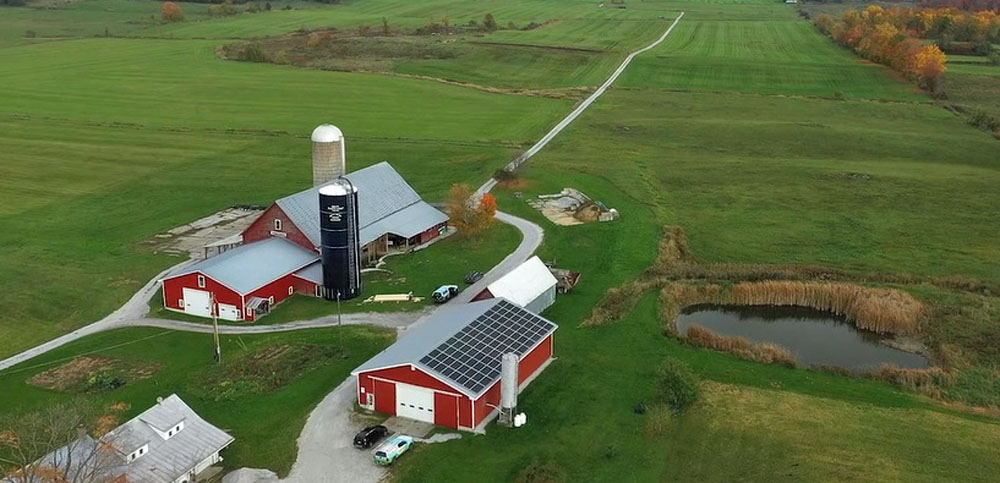The U.S. Department of Agriculture’s Rural Utilities Service said it will issue by mid-year a notice of funding opportunity for $9.7 billion in financial support for rural electric cooperatives. The program, funded by the Inflation Reduction Act, will make loans and grants to help rural electric co-ops purchase renewable energy, renewable energy systems, and other types of clean energy systems.
USDA said it hopes to begin obligating funds by September, in a presentation to the National Rural Electric Cooperative Association. “We need potential applicants to start thinking about potential applications now,” the department said in its slide deck. “We are available to answer your questions now and when we publish our notices.”
The Inflation Reduction Act provides for “direct pay” of tax incentives for renewables and storage investments, enabling tax-exempt rural electric co-ops to now access the incentives, said the USDA slide deck. “Direct pay could cover 30-50% of project costs. We expect this to be stackable” with support under the $9.7 billion program.
The USDA program could help finance at least 20 GW of solar, wind and storage, said Uday Varadarajan, a senior principal at the nonprofit RMI, in a webinar hosted by the nonprofit Sierra Club. He said that $9.7 billion in grants would allow rural generation and transmission (G&T) co-operatives to raise an additional $39 billion in debt to invest in renewables and storage “without rate increases or credit downgrades.”
“Even more” clean energy capacity could be leveraged, he said, by also using the direct pay tax incentives and “creative financing structures.” With direct pay tax credits, he said an RMI study showed it is now “practical” for 13 G&T cooperatives to “transition and replace” 70% of current annual emissions from fossil generating units.
Noting that customers of the nation’s rural electric distribution co-operatives are also co-op members, Jeremy Fisher, a senior advisor in the Sierra Club’s Environmental Law Program, said on the group’s webinar that co-op members “have the opportunity to help make decisions” for their electricity generation and transmission system. The Sierra Club describes itself as the nation’s largest grassroots environmental organization.
Rural electric distribution co-ops are in turn members of the nation’s 63 G&T cooperatives, which Fisher said provide the vast majority of generation for rural electric distribution co-ops. Distribution co-ops can also add smaller-scale renewable generation and storage to their distribution systems.
Fisher announced a new Sierra Club online tool, the Rural Electric Cooperative Explorer, which he said enables a distribution co-op member to see “what the power supply of your generation and transmission company looks like,” as well as possible clean energy replacement opportunities.
The USDA in its presentation highlighted the department’s web page on Inflation Reduction Act funding for rural development, and a web page to sign up for updates on funding opportunities. The USDA calls the $9.7 billion program the New ERA program, which stands for Empowering Rural America. The department has discussed the program with eligible participants through a tribal consultation and 13 roundtables in recent months, which drew over 1300 attendees.
Rural electric cooperatives serve 42 million people, and operate in 92% of persistent poverty counties, says the National Rural Electric Cooperative Association on its website.
This content is protected by copyright and may not be reused. If you want to cooperate with us and would like to reuse some of our content, please contact: editors@pv-magazine.com.








By submitting this form you agree to pv magazine using your data for the purposes of publishing your comment.
Your personal data will only be disclosed or otherwise transmitted to third parties for the purposes of spam filtering or if this is necessary for technical maintenance of the website. Any other transfer to third parties will not take place unless this is justified on the basis of applicable data protection regulations or if pv magazine is legally obliged to do so.
You may revoke this consent at any time with effect for the future, in which case your personal data will be deleted immediately. Otherwise, your data will be deleted if pv magazine has processed your request or the purpose of data storage is fulfilled.
Further information on data privacy can be found in our Data Protection Policy.